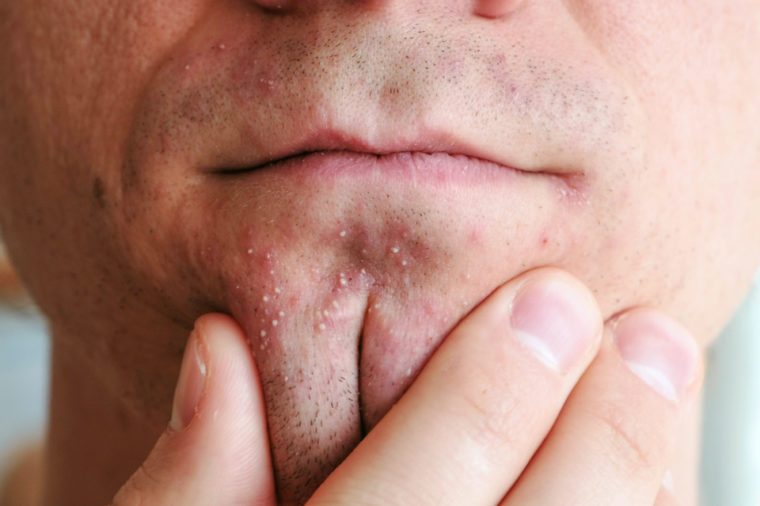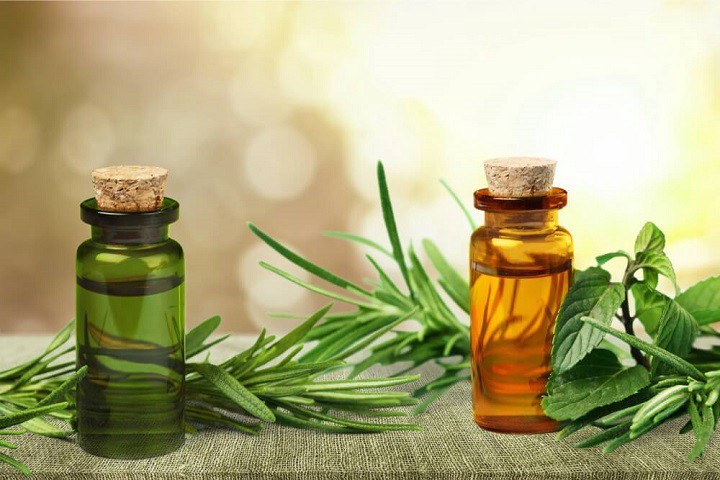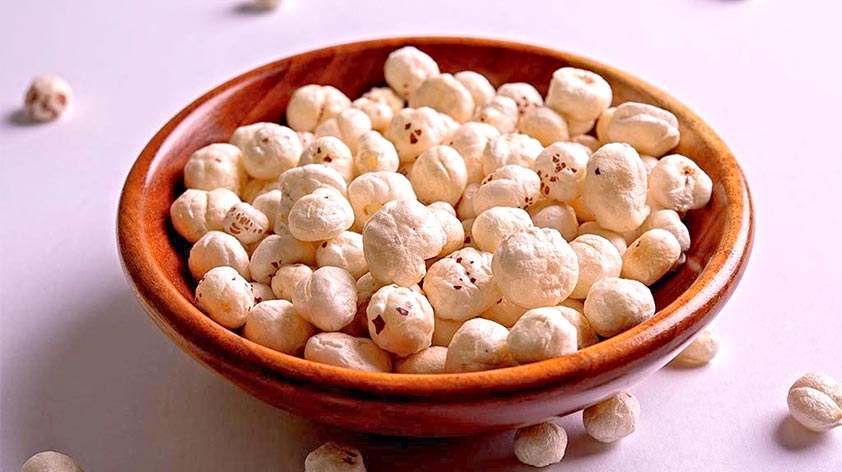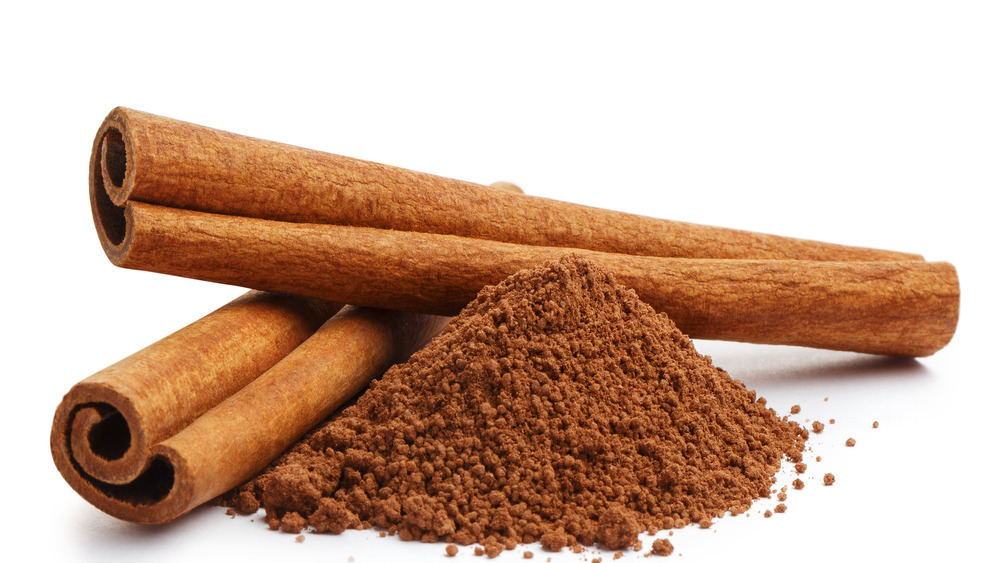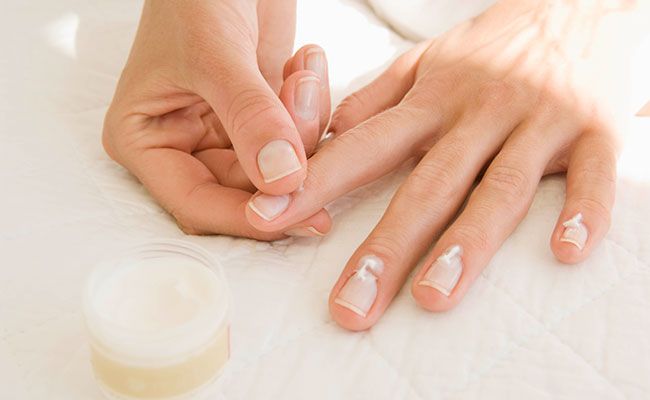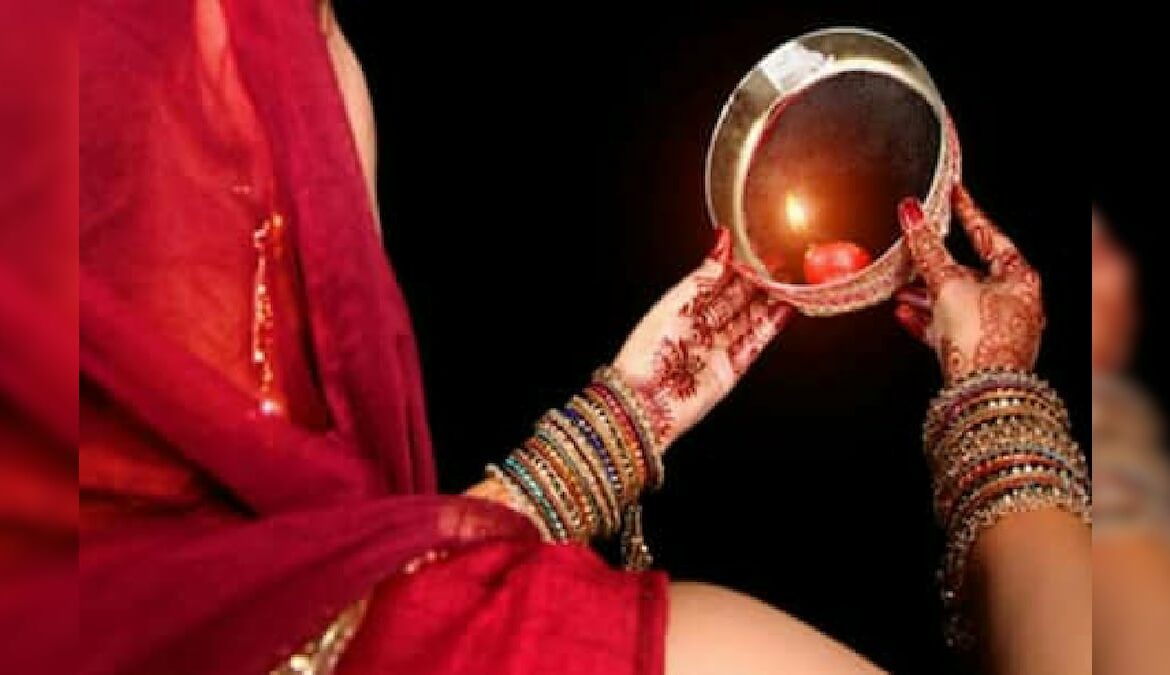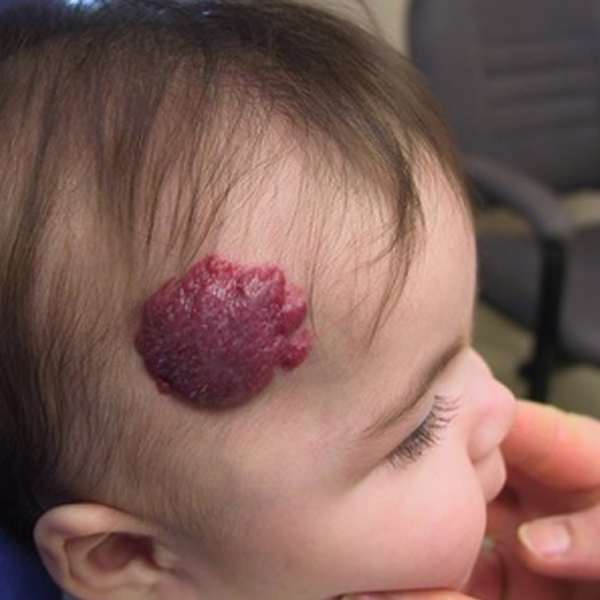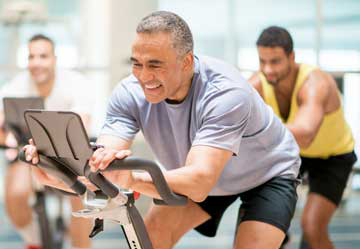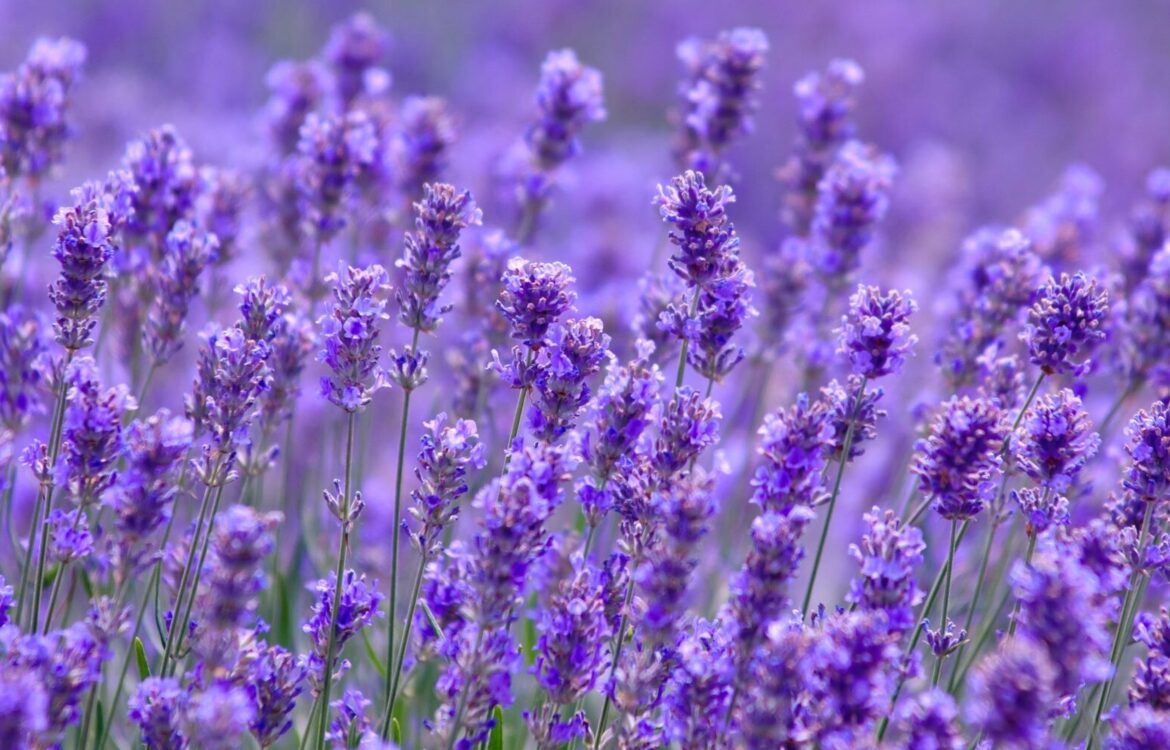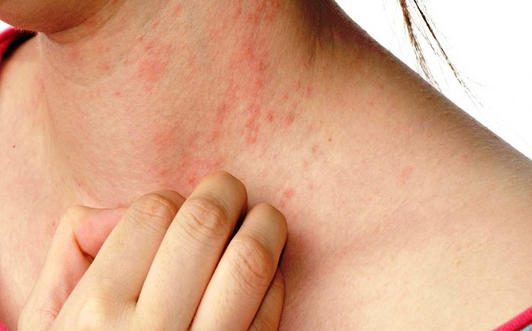Author Archives: Dr. Vaidya Karanvir Singh
Whiteheads Home Remedies
- November 3, 2021
- Posted by Dr. Vaidya Karanvir Singh
- 0 Comment(s)
Ways to remove whiteheads: To get relief from the problem of white heads, the help of some simple things found at home can be taken. This is because of the dirt accumulated on the face. So at the same time, due to the stickiness in oily skin and some allergies, it also happens.
The problem of Whiteheads is due to the dirt accumulated on the face. So at the same time, due to the stickiness in oily skin and some allergies, it also happens. To get relief from these, some simple things that can be found at home can be taken help.
Tea Tree Oil
It is considered a good ingredient as a skin cleanser. With this, it will also help in clearing the white heads. For this, dip a piece of cotton in tea tree oil. Apply this on the face.
Tea Tree Oil Benefits: The benefits of applying tea tree oil in winter are many, the problem of winter rashes, pimples and dandruff will go away.
Aloe Vera
It not only moisturizes the skin. Rather, it also provides relief from many skin problems. By applying it on the face, the problem of white heads is also reduced. Apply fresh gel extracted from the leaves of Aloe Vera on the areas with black heads or white heads. Leave it on for 20 minutes. Then, when it dries, clean the face with plain water.
Honey
With this, the problem of white heads is also reduced. Honey is a nutritious and beneficial thing for the skin. Apply this to clean white heads. Simply, take 2 teaspoons of honey and heat it for 10-15 seconds. Then, apply it on your skin. When it dries, wash it off with plain or lukewarm water.
Hot Towel:
Keeping a towel dipped in warm water on the face also provides relief from whiteheads. Similarly, you can also inhale hot water steam. Which, helps in clearing the white heads of the face
Tomato
Tomatoes are rich in vitamin C and such elements can easily get rid of skin related problems. To get rid of whiteheads, rub tomato pulp thoroughly on the face. After about 5 minutes, wash off with water.
Curd
You can get rid of the problem of whiteheads by using curd. For this, add 2 teaspoons of curd to 1 teaspoon of oatmeal and mix it well. After that apply it on the face. After leaving on for about 10 minutes, wash off by massaging with light hands.
Get a glowing face using tomatoes like this, pimples will disappear along with freckles
Garlic
Garlic has anti-bacterial, anti-oxidant properties. Grind a clove of garlic and apply it on whiteheads. Wash off after leaving for about 5-10 minutes.
Chickpea Scrub
Grind 1 teaspoon of gram dal and mix it with 1 teaspoon of raw milk and 2 teaspoons of rose water. Now keep this paste on the face for 20 minutes, then wash the face.
Sandalwood Scrub
Take sandalwood powder 1 teaspoon , add a little lemon and 2 teaspoons of rose water to make a paste. Now apply it on the face for 15 to 20 minutes then wash the face.
Almonds and Milk
Make a paste by grinding 5-6 almonds, mixing 2 teaspoons of milk in it and apply it on the face for some time, after drying, rub it with light hands and wash the face. With this, the skin will also become shiny along with removing white heads. Do this regularly 1-2 times a week.
Fenugreek
Make a paste by grinding a handful of fenugreek. Now apply this paste on the face for 15 to 20 minutes and then rubbing the face with lukewarm water.
Wash off.
BENEFITS OF TEA TREE OIL
- November 3, 2021
- Posted by Dr. Vaidya Karanvir Singh
- 0 Comment(s)
In summer, there is a lot of sweating on the face, due to which burning and itching starts on the face. By using Tea Tree Oil, you can get relief from this problem. You can use tea tree oil on any type of skin. Let us know some other benefits of tea tree oil.
Benefits of Tea Tree Oil: Tea tree oil is very good for the skin. It is one of the traditional remedies, which removes health related problems. The Benefits of Tea Tree Oil is used to cure skin problems. For example, serious problems occurring in the skin, nails and hair can be cured through tea tree oil.
Dry Skin and Eczema
Due to excessive sweating, burning and itching starts on the face. Tea tree oil should also be used to cure this problem as well. It contains zinc oxide and clobetasone butyrate ingredients, which are considered very effective for the skin.
This mixture of neem, basil and sandalwood will bring natural glow on the face, just know the right way to use
Ayurvedic face mask for normal, dry and oily skin, prepare and get glowing skin in this way
How to use
Add a few drops of tea tree oil to any oil of your choice. Massage your skin with this mixture. On the part of the body that feels dry, you can use tea tree oil. Leave this oil on your skin overnight and wash it off in the morning.
Oily skin troubled
In summers, the face becomes very oily due to sweating. Tea tree oil is also considered good for oily skin. It is rich in antiseptic properties, which are considered good for the skin.
how to use
To apply tea tree oil if you have an oily face, mix it with a toner, moisturizer, or sunscreen. You can also use it in your face mask. The use of tea tree oil will give a glow to your face as well as soothe the irritation caused by sweating. This will give relief from sweating and itching on the face.
Reduce Pimples
If you have acne on your face for a long time, then you can use tea tree oil for this. It has antiseptic properties that treat acne and pimples.
How to use
Make a mixture of honey and curd and add a few drops of tea tree oil to it. After that apply this paste on the face. After applying this paste on the face for fifteen minutes, wash it off with cold water. The difference will be visible.
After Shave
It’s common to accidentally get cut while shaving, but don’t worry. The solution to this problem will be found with tea tree oil. Not only this, if you apply tea tree on the face before shaving, then it makes your razor glide smoothly on your face.
How to use tea tree
Dip a cotton ball in tea tree oil. After that apply it on the cut. The problem will get rid of.
Irritation on skin
If you are troubled by minor injuries or burns, then you can also use tea tree oil for this. Tea tree oil can also easily get rid of blisters.
How to use tea tree oil
Wash the burnt area with cold water. Make a paste by mixing aloe vera oil with tea tree oil. Apply this paste on the burnt area. Apply this paste daily until the bruising and burns get rid of.
HEALTH BENEFITS OF LOTUS
- November 3, 2021
- Posted by Dr. Vaidya Karanvir Singh
- 0 Comment(s)
The lotus flower, its leaf, root and seed are used to prepare different medicinal medicines in ayurveda. In particular it is known as an entogenic drug, a psychoactive substance. It is believed that the coolness of this lotus flower can give peace to your mind. At the same time, it also affects your consciousness and helps in controlling it. These two main compounds are responsible for these psychoactive and medicinal effects of this flower. First apomorphine and second nuciferin. At the same time, your blood pressure is also controlled by drinking tea made from lotus flower. So let’s know the health benefits of lotus flower and how to use it.
Health benefits of lotus flowers
Today most of the people prefer more natural solutions for their health than other traditional medicines. And for this reason herbs like lotus flower extract are gaining great popularity. At the same time, it also has benefits for the body. As if
1. Reduces stress
Using lotus flower can help in controlling your stress. Actually, by using lotus flowers regularly, it can control the temperature and blood pressure in your body. Also it can calm your mind. This increases the feel-good hormones, which promote sleep and help you sleep comfortably. Lotus plant extracts also help manage common ailments such as stress and anxiety. It also acts as an herbal supplement for people suffering from depression.
2. Chronic pain relief
Are you suffering from chronic pains? Consider adding the blue lotus herb to your daily herbal regimen. Actually, it contains a good amount of antioxidants, which is a pain reliever. For this reason blue lotus medicine has been used to help manage the symptoms of various ailments. In ancient times, it has been used to reduce pain associated with serious diseases such as arthritis and cancer. Besides tea and powder, blue lotus is also found in tincture form. Add it to your morning coffee or tea to help manage pain and feel better.
3. Reduces anxiety
Lotus extracts help promote a healthy circulatory system, which means the body’s blood circulation gets better. At the same time, it strengthens the nervous system and it becomes beneficial for those people who have lotus for anxiety. At the same time, it also helps in improving sharp mind and memory. Thus lotuses help in speeding up the process of making memories.
Make herbal tea from lotus flower
You can get all these benefits by drinking herbal tea made from lotus flower early in the morning. To make it
- Take a lotus flower.
- Then put water and cardamom in a pot and offer it.
- Now add light sugar and tea leaves to it.
- Put some petals of lotus flower in it.
- Let everyone flounder together. Now add milk and turn it off after the bus boom.
- Now bark this tea and serve.
Let us know that starting your morning with this tea will boost your energy. At the same time, this tea is also beneficial for those people who want to increase their immunity. So drink this lotus flower tea daily for a sharper mind and good memory.
4. As a blood enhancer
Lotus cucumber increases efficiency and energy levels by stimulating the circulation of blood by increasing oxygen to our organs. The iron and copper present in it helps in increasing the production of red blood cells and increasing the flow of blood along with filling the deficiency of blood.
5. Controlling cholesterol
The potassium present in it has the ability to widen the blood vessels. It has the ability to lower cholesterol. The pyridoxine present in its root controls the level of homocysteine in the blood which can directly lead to heart attack.
6. Make the brain healthy
Potassium maintains the balance of fluids in our body. This is by reducing the effects of sodium in the bloodstream. It relaxes the blood vessels and reduces its narrowing and stiffness. Potassium is also an essential component of nerve activity and maintains fluid and blood flow to the brain.
7. For the respiratory system
Lotus root is beneficial for the respiratory system. It helps in cleansing and providing strength to the respiratory system. Its tea is consumed to get relief from cough as it melts the mucus.
8. Control blood pressure
The potassium found in it maintains the balance of fluids in our body. It reduces the effects of sodium in the bloodstream. It relaxes the blood vessels and reduces its narrowing and stiffness. Potassium is also an essential component of nerve activity and maintains fluid and blood flow to the brain.
9. For pregnant women
The benefits of lotus cucumber prove to be useful for pregnant women as well. The nutrients present in it are very beneficial for the development of the baby in the womb. Therefore pregnant women can use it.
10. In digestion
Lotus cucumber has abundance of fiber which is great for bowel movement. It reduces the symptoms of constipation and optimizes nutrient absorption through digestion and secretion of gastric juices.
11. Improves immune system
Vitamin c present in lotus cucumber is an important component of collagen which maintains the integrity and strength of blood vessels organs and skin and boosts the immune system. Apart from this, vitamin c can also destroy free radicals in the body.
12. Weight loss
Nutrients and fiber are found in high amounts in it and calories are very less. By consuming it, essential nutrients are obtained and our stomach feels full for a long time, due to which we avoid overeating and we lose weight. This reduces weight.
13. In the treatment of diabetes
The high amount of fiber found in it reduces the digestion of carbohydrates in the body. Thus the process of sugar absorption in the body is slowed down. The antioxidant and anti-inflammatory properties present in lotus cucumber help in fighting diabetes.
14. For the eyes
Vitamin a present in it is important for improving the health of skin, hair, and eyes. Antioxidants are found in it. It helps prevent macular degeneration and other conditions.
15. Useful for the skin
Rich in antioxidants, lotus root acts as a skin conditioner. Its use keeps the skin hydrated and moisturized and the skin becomes soft and glowing. It helps to remove fine lines, brown spots and wrinkles of the skin.
Disadvantages of lotus cucumber
- Eating it raw can spread parasitic or bacterial infection.
- If anyone is allergic to it, do not consume it.
Cinnamon
- November 3, 2021
- Posted by Dr. Vaidya Karanvir Singh
- 0 Comment(s)
Scientific name of cinnamon: Cinnamomum jhelonicum
Sanskrit name for cinnamon: Tvak
English name of cinnamon: Cinnamon
Benefits of cinnamon
A great medicine for digestive disorders
Cinnamon is a panacea for cold
Cinnamon is very effective in gynecology
Cinnamon is used at home to enhance the taste of food
Some Other Amazing Benefits of Cinnamon You Probably Didn’t Know
Cinnamon tree is always green and like a small bush. The bark of its stem is selected and dried. Their shape is spherical like Kavelu, dark, soft and brownish red in color. The fragrance always comes from the cinnamon tree. It is used as a condiment and medicine. Its oil can also be extracted. The leaves of the cinnamon tree are used as a spice in food. They are also called bay leaves. The calorific value of cinnamon is 355.
1. A Great Medicine for Digestive Disorders
Cinnamon can be used in these 4 different ways to improve digestion and for gastric disorders.
- If you feel indigestion, stomachache and burning sensation in the chest, you can grind cinnamon, dry ginger, cumin and cardamom in equal quantity and take it with warm water.
- Mixing cinnamon, black pepper powder and honey etc. after taking it after meals does not cause stomach problems.
- Cinnamon stops nausea, vomiting and diarrhea.
- To reduce the problem of constipation and gas, the powder and decoction of cinnamon leaves is taken.
2. Cinnamon is a panacea for cold
Boiling a pinch of cinnamon powder in water, adding a pinch of black pepper powder and honey to it, taking it reduces cold, cold, sore throat and malaria.
3. Cinnamon is very effective in gynecology
- Cinnamon is used in uterine disorders and gonorrhea.
- Chewing a piece of cinnamon for a month after delivery can prevent pregnancy.
- Cinnamon increases the breast milk of the mother.
- Uterine contraction occurs.
- Keep body and mind always healthy and happy with Sudarshan Kriya!
4. Cinnamon is used at home to enhance the taste of food
The use of cinnamon leaves and bark is used to enhance the taste of cakes, sweets and food.
Cinnamon oil is used in perfumes, sweets and drinks.
5. Some Other Amazing Benefits of Cinnamon
- For semen increase, take cinnamon powder with lukewarm milk in the morning and evening.
- If there is a headache due to cold, grind cinnamon with water and apply syrup.
- Cinnamon is used in the treatment of halitosis and toothache.
- To reduce acne, apply cinnamon powder mixed with lemon juice.
- Cinnamon is used as a measles preventive.
Constituents of cinnamon
- Protein
- Carbohydrate
- Phosphorus
- Sodium
- Potassium
- Thiamine
- Riboflavin
- Niacin
- Vitamin a and c
Cinnamon is sharply sweet in taste. Cinnamon has hot, light, digestive, purulent, expectorant, erectile properties. Reduces restlessness of mind. Improves liver function. Increases memory power.
Caution
- Cinnamon has warm properties, so use less during summers.
- Cinnamon can increase bile.
- People of hot nature should consult a doctor.
- Disadvantages of Cinnamon – Side Effects of Cinnamon in Hindi
- We have told about the benefits of eating cinnamon, but consuming too much of it can also bring disadvantages.
- Due to the acidic nature of cinnamon, teeth can be affected, leading to plaque and other problems.
- Gastrointestinal (abdominal) disorders.
- Allergies.
- Liver problem.
- Can lower glucose levels, which can make a person feel energized.
Hangnails
- November 3, 2021
- Posted by Dr. Vaidya Karanvir Singh
- 0 Comment(s)
It is a little difficult to understand the internal discomfort of the body, but if any physical problem is seen, then it becomes a little easier to understand. Actually, it can be easy to fight any disease only by understanding physical problems or mental problems. Sometimes we ignore all the problems and even a small problem becomes a big problem. Today in this article I will share with you all the information related to hangnails, because many people take care of their nails, but by not taking care of small things, they themselves indulge in problems and these problems include hangnails. .
What is Hangnails?
We are all familiar with the problem of peeling off the skin around the nails, but sometimes severe pain or burning due to peeling of the skin around the nail indicates an infection. In such a situation, if something touches the fingers, then along with tingling, the pain increases even more. This problem is called hangnails. To avoid or avoid the problem of hangnails, it is important to understand its symptoms.
What are the symptoms of hangnails?
Before I share with you about the symptoms of hangnails, I would like to remind one thing. It is said that small wounds in sight should be serious. Actually that’s the problem with hangnails, because you don’t pay attention to this small annoyance. So understand its symptoms. like:
- Redness of nails and surrounding skin.
- Swelling around the nail.
- Pain in the nails and surrounding skin.
- Heating of nails and skin.
- Bleeding from around the nail.
- Abscess coming from the nail.
These symptoms indicate the problem of hangnails, ignoring which is no less than feasting on any other problem. It is also important to understand the causes of the problem of hangnails, only then it can be treated properly and your nails can be attracted again.
What are the causes of hangnails?
Hangnails can be caused by the following reasons. like:
- Having dry skin.
- Nail-biting.
- Too much nail biting.
- Excessively soft skin around the nail.
- Using artificial nails.
- Using too much water with your hands.
- Having problems with diabetes.
- Nail biting or finger sucking.
Hangnails can be caused due to the above mentioned reasons, but it is not that this problem cannot be removed.,
nail infections are caused by dirt, pollution, poor hygiene, synthetic socks and prolonged sweating in the feet. It needs cleaning.
If you want, you can adopt these home remedies.
Apple cider vinegar
The acetic acid and anti-inflammatory properties found in it do not allow the nail infection to grow. Take equal quantity of apple cider vinegar and water. Now soak both your feet and hands in it. Will benefit.
Mouth wash
Mouth wash has antiseptic and anti-fungal properties, due to which it kills the germs of the mouth. That is why it is beneficial for nail infections.
Oregano
Oregano oil has anti-fungal, anti-bacterial, anti-inflammatory properties. Which protect against nail infection.
Lemon juice
Lemon juice cures nail infections. The citrus acid found in lemon kills the bacteria that cause infection. Apply lemon juice on the nails twice a day. You will get rest.
Tea tree oil
Tea tree oil is considered good for healing nail infections. It has antiseptic properties. Take some tea tree oil and mix olive oil in it. Now apply it on the nails with the help of cotton and leave it to dry.
Hot water
Always wash your hands and nails with warm water because hot water removes dead skin, which does not cause infection in the nails. Not only this, blood circulation remains fine with hot water.
Garlic
Nail infection can be cured with garlic. It has anti fungal properties so that bacteria do not grow again. Take some garlic cloves and mash it well. Then add white vinegar to it and apply.
TIPS TO KEEP IN MIND FOR KARWACHAUTH FASTING
- November 3, 2021
- Posted by Dr. Vaidya Karanvir Singh
- 0 Comment(s)
Karva Chauth fasting holds a very special significance for every indian woman. On this day, every married woman fasts for the longevity of her husband by doing sixteen make-up. From shopping to parlor, every woman starts preparations for Karva Chauth several days in advance. Despite this, many times, unknowingly, there are some such mistakes, which women should not commit even after forgetting on the day of Karva Chauth. Let us know what are the health-related mistakes before and after the Karva Chauth fast, which every woman should avoid before and after the fast.
What to do during Karva Chauth fast
- Eat something in the sargi of Karva Chauth so that you can get energy throughout the day. For this, eat dry fruits in the morning in sargi. By consuming them, you will get the strength to stay hungry throughout the day and will not feel hungry. You can also eat some almonds or walnuts before fasting, which will keep your energy level up for several hours.
- Apart from this, you can also include warm milk in your sargi, this will give you energy for the whole day.
- Before the start of the fast, you should eat such food in Sargi so that your stomach remains full for a long time and you do not feel hungry.
- Do not do much work at home to keep yourself busy on the day of fast, otherwise you will soon start feeling tired. To keep yourself busy, spend time with family and friends.
- Try to give rest to the eyes. Using too much TV or phone can make your eyes tired, so keep a balance with these things.
- A day before fasting, try to sleep early at night and get up early in the morning. By doing this you will feel fresh throughout the day.
- To avoid weakness, use more and more milk in your diet. At night, make something like kheer, milk and eat it by adding a lot of dry fruits to it. Nuts contain healthy fat.
- You can also include kiwi in your diet, it can boost immunity.
- Drinking coconut water before fasting gives energy to the body and also keeps the body hydrated.
- Eating gooseberry murabba on an empty stomach does not cause acidity and does not feel tired.
What not to do in fasting
- Do not do any physical exercise, sports or climb more stairs on the day of fasting, doing so can cause exhaustion in your body.
- Do not eat a lot of food or drink water immediately after breaking the fast at night. After being hungry for the whole day, eating a full stomach food can worsen your health. On the other hand, drinking too much water can make you vomit. After breaking the fast, try to drink some water and eat light food.
- Do not drink tea immediately after breaking the fast. By doing this you may have acidity problem.
- Do not eat spicy and fried food at all a day or a night before the fast, by doing so you may feel more thirsty or even dizzy the next day.
- Even after the fast of Karva Chauth, there will be no dizziness and health will not deteriorate, learn diet tips from experts
Best karwa chauth diet plan
The time of Karva Chauth has come and in such a situation many women will keep a fast. Karva Chauth is a very important festival and many women observe a completely nirjala fast. But such fasting often causes dizziness and problems in eating and drinking the next day. In such a situation, it is very important that you have to take care of some things related to your diet.
People observing a strict fast like Karva Chauth should keep in mind that they will have to be careful about their diet 3-4 days in advance. This is because if your body is starved and thirsty, it becomes weak and in such a situation there is a possibility of health deterioration.
Make a hydration plan for Karva Chauth-
First of all a good hydration plan is essential for Karva Chauth fasting. Here we are talking about the hydration plan because, only with this you will be able to prepare your body for the fasting of Karva Chauth., ‘Start increasing hydration before Karva Chauth, meaning you have to drink water by sip-sip.’
Karwa chauth diet tips
For example, if you weigh 50 kg and I make my hydration plan from tomorrow, then I have to drink 2-3 liters of water little by little throughout the day. This will ensure that there will be no lack of hydration in your body and strength will remain in the body during the fast. Do not drink a lot of water at once. You neither have to over-hydrate yourself nor under-hydrate. It is very important that you drink water little by little. If you do this from now on then problems like dizziness on that day can be avoided. The strength will remain in the body that day.
What to do if you do not feel weak and ill on the day of Karva Chauth?
Get up in the morning and take feni, milk, dates or chia seeds. In such a situation, you will have strength throughout the day and there will be no weakness. If you feel that you are not able to eat feni early in the morning, then at the time of Karva Chauth, take milk and 1 teaspoon chia seeds in sargi. You must keep fruits in your sargi. If you do this then hydration will be plentiful. Also take dry fruits so that the energy will remain throughout the day. You can also eat chia pudding. Chia seeds have water holding capacity to maintain hydration throughout the day. You can also take coconut water.
Karwa chauth sargi
Avoid eating fried food too much.
Keep these things in mind while breaking the fast of Karva Chauth-
If you want to start with water while breaking the fast of Karva Chauth, then it is fine, but according to Swati, fennel water will prove to be most useful. Many people have problems after eating food and fall ill due to acidity etc. In such a situation, if you eat fermented foods like dhokla, idli etc. and drink fennel water, buttermilk, coconut water at night time, then it can be good for you.
How to make fennel water-
Boil one teaspoon each of cumin, coriander seeds, fennel in 1 glass of water and drink this water after filtering it. By doing this you will not get acidity. Apart from this, even if you can eat a little bit of ginger, you will not get acidity.
Hemangioma
- November 3, 2021
- Posted by Dr. Vaidya Karanvir Singh
- 0 Comment(s)
Hemangioma is an abnormal buildup of blood vessels in the skin or internal organs. It is a reddish-purple raised mark on the skin. A hemangioma is a benign and usually self-associated tumor (swelling or growth) of cells that line blood vessels. Hemangioma is also called hemangioma in Hindi and usually appears in the first week of life. The self-associated tumor eventually disappears.
It is also known by these names Cavernous hemangioma, Strawberry nevus, Birthmark – hemangioma, hemangioma.
Hemangioma seen more often in premature babies
A hemangioma is a birthmark that grows during the first year of life and goes away with time. It can appear on the face, head, chest or back.
Most hemangiomas disappear on their own. In rare cases, hemangioma can interfere with vision or cause other symptoms, and can be treated with medications or laser surgery.
A hemangioma is a noodle that is formed by blood vessels. Hemangiomas occur most commonly in the first day or first week after birth. They are most often found on the head or neck, but they can also develop on internal organs, most commonly in the liver.
If a hemangioma occurs during the first weeks after birth, it is said to be growing. However, they usually stop growing after a few weeks. Most hemangiomas gradually disappear. Only some hemangioma cause complications such as ulcers, scarring or bleeding.
Cause of Hemangioma
Hemangioma are present in about a third of babies at birth. The remainder appear in the first several months of life.
Hemangioma can be:
- Above the skin folds ( capillary hemangioma capillary hemangioma)
- Deep in the skin (cavernous hemangioma)
- Mix of both
Symptoms of Hemangioma
- Red-purple bumps on the skin
- A large, raised tumor with blood vessels
- Most hemangioma occur on the face and neck
Examinations and Tests for Hemangioma
Doctors perform a physical exam to diagnose a hemangioma. If a buildup of blood vessels is deep inside the body, a CT or MRI scan may be needed.
Hemangioma may occur with other rare conditions. Other tests may be done to check for associated problems.
Treatment of Hemangioma
- Most small or demarcated hemangioma may not require treatment. They often go away on their own and the appearance of the skin is normal. Sometimes, a laser may be used to remove small blood vessels.
- Caveal hemangiomas that block the eyelid and vision can be treated with laser or steroid injections. This allows the vision to develop normally. Large clustered hemangioma or mixed hemangiomas can be treated with steroids, which are taken by mouth.
- Taking beta blocker drugs can help reduce the size of the hemangioma.
- Small, reddish-purple raised bumps on superficial skin often disappear on their own. About half disappear by age 5, and almost all disappear after age 9.
Possible complications of hemangioma
- Bleeding (especially if the hemangioma is bruised)
- Breathing and eating problems
- Psychological problems from the appearance of the skin
- Secondary infections and wounds
- Visible changes in the skin
- Eye problem
If there is a red-purple raised mark (hemangioma) on the skin, less should be consulted with the doctor
All birthmarks, including hemangiomas, should be evaluated by your doctor during a routine examination.
Eyelid hemangioma that can cause vision problems should be treated soon after birth. Hemangioma that interfere with eating or breathing also need to be treated quickly.
There is no known way to prevent hemangioma.
Detox Premium Powder:
This is a herbo-mineral preparation that contains ingredients like Parwal Pishti, Giloy satv, Shukta Pishti, Kamdudha Ras, Gandhak Rasayan, etc.
Parwal Pishti: This Pishti reduces inflammation, flaking, itching of the skin. The Pishti is composed of natural coral calcium processed with rose water.
Shukta Pishti: It helps to balance the Pitta dosha in the body. All signs and symptoms related to Psoriasis patients are managed with this article.
Giloy Satv: This satv is prepared from the herb Giloy (Tinospora cordifolia). The anti-inflammatory, antioxidant, and analgesic properties of this herb deal with psoriasis easily.
Kamdudha Ras: This herbal-mineral classical preparation balances Pitta dosha in the body.
Gandhak Rasayana: This herbal preparation is used since ancient times for all types of skin disorders.
Tal Sindoor: It contains ingredients like Shuddh parad, Aloe vera, Gandhak, etc that relieve redness in psoriasis patients.
Akik Pishti: This Pishti reduces all types of Pitta related disorder hence it gives good results in psoriasis.
Recommended Dosage: Take 1 sachet twice daily with plain water.
Blood Purifier Syrup :
It is ayurvedic syrup that consists of various natural ingredients such as Khadir Chall (Acacia catechu), Manjistha (Rubia cordifolia), Neem (Azadirachta indica), Giloy (Tinospora cordifolia), Harad (Terminalia bellirica), Baheda (Terminalia chebula), Amla (Emblica officinalis), etc. As the syrup purifies the blood by removing excess toxins it is very beneficial in maintaining proper circulation and improves the skin naturally.
Recommended Dosage – Take 2 teaspoonful twice daily.
Skin Care Plus tablet:
skin care tablet is a pure ayurvedic formulation. It help to maintain the texture of your skin depending on the type of skin you have. It contains various herbs like Haridra khand, Panchnimb churna, Khadir chahal, Chirayta, Mulethi, Chopchini, Gandhak, Ajmoda that work very effectively on all skin types. Skin care is a blood purifying tablet. It cools and detoxifies the blood, increase blood circulation of the skin. It minimizes the blemishes, lighten sun tan, delay ageing of skin and heal skin problems.
Recommended Dosage: Take 1 tablet twice daily.
Panchatikta Ghrita Guggulu:
Panchatikta Ghrita Guggulu is an ayurvedic preparation mainly used for skin diseases. This tablet contains pure herbal ingredients such as Nimba(Azadirachta indica), Patola(Cucumis acutangulus), Guduchi(Tinospora cordifolia), Vasa(Adhatoda vasica), etc. This tablet promotes detoxification and rejuvenation. Panchatikta Ghrita Guggulu tablet is a natural source of anti – oxidant. It promotes engender vibrant and healthy skin.
Recommended Dosage–Take 1 tablets twice a day with normal water.
HOW TO REMAIN YOUNG FOREEVER
- November 3, 2021
- Posted by Dr. Vaidya Karanvir Singh
- 0 Comment(s)
Everyone wants to always look young. In the desire to look younger, people do not know what efforts do. However, if a healthy lifestyle is adopted, then age remains nothing but just a number. At the same time, a spoiled lifestyle makes you old before age.
Get involved in eating fat
The wrong thinking for fat remains among the people. People have a belief that this makes a person fat and unscrupulous. Rather, according to experts, fat is also essential for bone health. Just keep in mind that this fat does not accumulate extra in your body.
Drink plenty of water
Everyone must drink 3-4 liters of water in a day. Make a habit of drinking water forever, because it is very helpful for the smooth functioning of the organs in the body. Drinking water also keeps the stomach clean and it is also very helpful in the prevention of many other diseases.
Increase stamina
If your stamina is good then you will not have any physical problem till long life. For this, include things like eggs, cheese, beans, pulses in the daily diet. To increase stamina, you should do light exercise regularly. Walk and run daily.
Improve meal timing
No matter how busy you are, never miss a meal. Never miss breakfast. Keep such things in the food from which the body gets all the necessary nutrients. Eat food on time. Keep a gap of 2 hours between sleeping and eating.
Everyone wishes that the young look should always be maintained. In such a situation, your diet will help more than cosmetics. Know what things you eat to become Young Forever
Everyone wishes that the young look should always be maintained. In such a situation, your diet will help more than cosmetics. Know, by eating which things you can become Young Forever:
Protein rich healthy diet helps you a lot in building muscles, but at the same time, a lot of fat also increases on the body. Too much fat can also lead to the problem of wrinkles later. In such a situation, if you take fruits and vegetables rich in anti-oxidants, then you will get double benefit. Not only will you get protein from them, but you will also avoid fat. You know, about such foods that help keep you young.
Eat only wheat bread
In the middle age, people whose waist size increases a lot, because of this, there is more use of flour in the food. According to an American research, the chances of increasing the waist circumference of those who eat other food are more than those who eat only wheat bread.
Fish will make young
Fish is a great source of the protein leptin. It acts like a hormone in your body and prevents you from overeating by controlling your appetite. Especially oily fish like salmon are rich in omega 3. It helps a person of any age to fight wrinkles. This is the reason why people like to eat fish to stay young.
Moisturizer is a must
As you age, the skin starts getting dry. Actually, the body’s oil glands reduce the production of natural moisturizers. In this case, the skin becomes more dry. If you want to keep your skin always perfect, then you have to use nuts, seeds and olive oil.
Avoid biscuit-bread
Once you complete the age of 30, your body needs less calories than before. However it is not difficult to do so. For this, you have to avoid eating biscuits with tea only when you wake up in the morning or you will have to control taking extra bread slices during breakfast.
Snacks to avoid
Breakfast, lunch and dinner are still fine, but the real problem is to have snacks in between. If you want to keep yourself looking and attractive, you’ll have to avoid ice cream, chips, chocolate and soft drinks other than fixed meals.
Despite the age of some people, they look very old from the face. Because wrinkles and fine lines start appearing on their face, which makes their age appear more. In such a situation, you can follow some tips to make yourself look younger. With the help of which it is easy to show the age of your skin.
The first signs of aging are visible on the face (Tips to look younger naturally). Wrinkles and fine lines are just like evidence of skin aging. So, at the same time, despite the age of some people, they appear very old from the face. In such a situation, you can follow some tips to make yourself look younger. With the help of which it is easy to show the age of your skin.
Wrinkles Home Remedies: Lavender oil reduces wrinkles, will use lavender oil like this, so you will always look young.
Healthy Diet:
As diet itself plays the most important role in making and spoiling the health of our body. That is why, it is also important to adopt a healthy diet to look young and young (Tips to look younger naturally). Choose a diet for yourself that includes green vegetables, green tea and nuts. Actually, they all contain anti-oxidants. Which enhance the processes associated with making the skin appear healthy and young. As a result, your skin looks youthful.
- Vitamin C not only enhances immunity but also beauty, read here how to make homemade face pack rich in Vitamin C and its benefits
- Tips for anti-aging skin: Anti-aging properties are present in Mogra flowers, in these ways they can be used in skin care
- Dry Patches on Skin: To reduce dry skin patches, apply curd, your skin will glow in winter
Drink water frequently:
Drinking plenty of water benefits both the body and the skin. With this, not only your body remains healthy. Rather, your skin remains fresh and glowing. (Tips to look younger naturally)
Avoid stress:
Stress or tension reduces the beauty of a person’s face. Which works to make people look old before their age. So, take measures to protect yourself from stress. Exercise, practice meditation. Massaging with natural oils is also beneficial. Exercising increases stamina and massage improves blood-circulation in the body. This makes it easier to control stress.
LAVENDER
- November 3, 2021
- Posted by Dr. Vaidya Karanvir Singh
- 0 Comment(s)
Benefits of lavender oil
Lavender flowers are more beautiful than other flowers in appearance. Its oil has many properties which help in curing many types of problems of the body. If there is a problem of stress and fatigue, then it is beneficial in removing them. Although lavender oil is not a medical treatment. If the person is sick for a long time, then there is a need for medical treatment, not oil. Lavender oil may be helpful in reducing the person’s symptoms. Let us tell you in detail about lavender oil in today’s article.
Spike Lavender – Spike lavender plants look like grass and are small in appearance. Its height ranges from 200 to 700 meters.
English Lavender – English Lavender gives the most and nice aroma, but these flowers produce less oil. These plants mostly survive in the cold.
French Lavender – This plant is large in size and leaves are green and gray in color. This plant does not require much cold.
Lavendin – This type is more cultivated and produces more oil. The beauty of these flowers is better than other types. (Read more – Benefits and harms of rosemary tea)
Benefits of Lavender Oil?
Lavender oil may have the following health benefits. Let us elaborate further.
Relieve Joint Pain – The use of lavender oil is beneficial for joint pain. Apart from this, removes nerve pain because it has the property of relieving pain. If you are troubled by joint pain, then lavender oil should be used. (Read more – Home remedies to relieve joint pain)
Beneficial for the treatment of depression – Many people think the problem of depression is normal, but staying for a long time creates the risk of other health problems. Lavender is beneficial in reducing depression and anxiety. Some people massage the scalp with lavender oil and get relief from stress and anxiety. Lavender oil is helpful in reducing the mental problem of a person. (Read more – Ayurvedic remedies for stress)
In removing the problem of insomnia – Insomnia problem can happen to anyone which causes other problems such as lack of digestion of food and headache etc. According to some studies, lavender oil is considered effective in removing the problem of insomnia and the person’s insomnia starts decreasing. Lavender oil is used in aromatherapy which calms the mind. (Read more: Sleep problems)
Healing Acne – Lavender oil is beneficial in curing the problem of acne. Lavender has anti-inflammatory properties that cure acne. To use it, take a drop of cotton and some oil, now apply cotton on the affected area. This process can be used two to three times a week. (Read more: Acne home remedies)
Useful for headache – According to some research, lavender oil can be used for migraine and headache. Using lavender in aromatherapy helps to relax the brain. However, use only a few drops of lavender oil. (Read more: Headache home remedies)
Uses of Lavender Oil?
Lavender oil is used in the following ways. Let us elaborate further.
- Lavender oil can be used to remove the problem of acne and dermatitis on the skin. If using a few drops of lavender oil on a face mask or pace pack, consult a doctor.
- A few drops of lavender oil can be used in olive oil and coconut oil to massage the body. You can do this process twice a week. (Read more – Uses of Neem Face Pack)
- Two or three drops of lavender oil can be used for aromatherapy. Oil can be used to provide peace to the body. However, if you are using for the first time, consult a doctor.
Disadvantages of Lavender Oil?
The benefits of lavender oil are many, but in some rare cases there may be disadvantages.
- Lavender oil should not be used if there is an allergy to the use of lavender.
- Pregnant and lactating women are advised not to consume lavender oil.
- Not consuming lavender oil can lead to nausea, vomiting, and digestive problems in some people.
- Lavender oil reduces the effects of androgens by increasing the amount of estrogen in the body.
HEAT RASH
- November 3, 2021
- Posted by Dr. Vaidya Karanvir Singh
- 0 Comment(s)
The summer season has arrived. The problem of heat rash becomes common in this season. Children in particular are greatly affected by this. Along with itching, burning sensation also starts in it. Due to heat, the mood becomes irritable and does not feel like working. In summer, there is a need to take special care of your health and skin (Summer Remedies).
In summer, leave the house only when it is very necessary. Drink lots of water throughout the day and cover your body and face properly while going out in the sun. If you or someone you know has got the problem of prickly heat, then try some home remedies and get relief from it.
In summer, the problem of prickly heat increases a lot. These prickly heat troubles a lot from children to elders. If you want, you can remove it with these home remedies…
The summer season is painful for everyone from children to elders. Not only do many diseases arise in this season, but due to prickly heat in the body, there is severe itching. Prickly heat causes severe burning and itching in the body. This causes small rashes on the body.
It occurs in everyone from adults to children, but it is seen more in infants. Although this skin problem is not very big, but if you want, you can fix it at home with some easy home remedies.
What is prickly heat
In the scorching heat, when the pores of the skin get clogged due to sweat, then small red colored grains come out on the body. They are very itchy and feel burning. These grains are called prickly. It often occurs on the back, chest, armpits and around the waist. Sometimes they get better on their own, but sometimes they have to be shown to the doctor.
Skin allergy from dry skin
- bacteria present in sweat
- change in weather
- due to dust particles
- touching animals
- taking painkillers
- bad effect of tattoo on skin
- because of food
Skin allergy symptoms
- Red spots on skin
- Itchy
- Pimple
- Rash or cracking
- Feel jealous
- Ulceration
Multani mitti
Multani mitti has been used for a long time for the treatment of prickly heat. It opens the clogged pores and refreshes the skin. To apply it, mix it in rose water. Then apply it on the affected area and leave it for 20 minutes. Apply it daily and when the difference is visible, leave it for a day.
Cucumber
Itching due to heat can be easily cured by applying cucumber. It instantly brightens and cools the skin. For this, take half a cucumber, peel it and cut it into thin slices. Let them cool in the fridge for a few minutes and then apply them on the prickly heat.
Baking soda
Baking or cooking soda has antibacterial properties. It helps in preventing infections that may arise on the body due to heat and sweat. Clean the affected area of the body by mixing 2 teaspoons of baking soda in a bowl of water. Doing this twice a day will give benefit.
Aloe vera gel
Aloe vera gel has antibacterial and antiseptic properties, which provide relief from prickly heat rash. It also removes red colored rash along with itching. If you want to avoid prickly heat then apply fresh aloe vera gel. Apply it at least twice a day.
Ice
The coolness of the ice will soothe the heat and itching of the skin. Take 2-3 ice cubes in a cotton cloth and apply it on the prickly area. If you want, add ice to the water and let it melt and then soak a cloth in it and compress the affected area.
Papaya
Papaya will reduce the irritation and also give relief from itching. It unclogs the pores and exfoliates them. To apply it, mash a papaya and apply it on your skin. Leave it on for about 20 to 25 minutes and then wash it off with cold water. Do this daily.
Cold curd will be very useful
Cold curd proves to be very beneficial in getting rid of heat rash. Mix mint powder in half a bowl of cold curd. Apply this paste on the prickly heat with light hands. Take a bath after a while. This paste can be used twice a day.
Keep Ice Around You
If the problem of heat rash increases, then tie 2 or 3 pieces of ice in a cotton cloth. Now slowly massage it on the prickly heat with light hands. By doing this you will get relief in 5-10 minutes
Oatmeal recipe is effective
Mix one spoon of oatmeal in half a bowl of cold milk. Keep it in the fridge to cool down. After that apply it on the prickly heat and massage it for 10-15 minutes. Then take a bath. It can be applied several times a day. It enhances the beauty of the skin and also removes the problem of prickly heat.
Camphor and Coconut Oil
Sometimes due to allergies, there is a lot of itching in the skin. When this happens, do not touch the skin again and again with your hands and use camphor, coconut oil. Grind camphor and mix coconut oil in it, then apply it on the itchy area. By doing this at least 2 times a day, your allergy problem can go away.
Alum
Wash the allergic areas with alum water. After that apply camphor and mustard oil mixed on it. If you want, you can also apply alum and coconut oil in its place.
Adopt this ayurvedic paste to strengthen teeth, you will also get relief from the problem of bleeding gums
Neem leaves
Rich in anti-bacterial and anti-inflammatory properties, neem is effective in removing the problem of allergies. For this, soak neem leaves in water at night and make a paste of it in the morning. This can cure your skin allergies. Apart from this, use antibacterial soap in summer. It will not cause allergy problem. Also, stay in the open air as much as possible.


